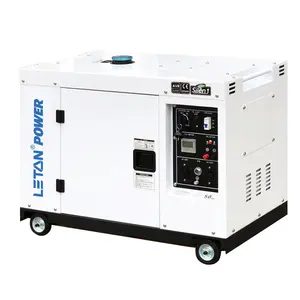
All categories
Featured selections
Trade Assurance
Buyer Central
Help Center
Get the app
Become a supplier









Các. ng genset được tìm thấy tại Alibaba.com là những nguồn năng lượng tiên tiến tạo ra năng lượng điện cần thiết cho các mục đích sử dụng khác nhau. Vai trò của những. Không thể bỏ qua ng genset vì chúng thu hẹp khoảng cách trong trường hợp không có các nguồn thông thường như điện. Sản lượng điện của chúng. ng genset cũng tốt như từ các nguồn điện theo quy định và do đó là lý do tại sao chúng được sử dụng trong các lĩnh vực thương mại và hộ gia đình khác nhau
Những loại hiện đại này. ng genset được tạo ra bằng các công nghệ hiện tại khiến chúng không gây tiếng ồn trong khi hoạt động, nghĩa là chúng thậm chí có thể được sử dụng ở những nơi như bệnh viện. Bạn nên nhiệt tình khi vào trang Alibaba.com để tìm. ng genset đã cài đặt các thiết bị điều khiển thông minh giúp chúng hoạt động tự động. Hệ thống phun nhiên liệu trực tiếp của. ng genset mang lại cho chúng khả năng hoạt động linh hoạt ngay cả ở những khu vực ngoài trời không có nguồn điện khác.
Tuyệt vời. ng genset có mặt tại thị trường này rất hữu ích trong các trang web thương mại, chẳng hạn như các khu vực khai thác để cung cấp năng lượng cho máy móc được sử dụng. Ngoài ra, các đơn vị điều khiển thông minh được cài đặt trong chúng. ng genset đặt thiết bị này ở chế độ không người lái khi đang vận hành và chúng cung cấp khả năng bảo vệ khỏi quá tải điện. Không chê vào đâu được. ng genset có các vật liệu cách âm được gia cố để làm cho chúng rất yên tĩnh khi hoạt động.
Mở rộng tìm kiếm của bạn. ng genset bằng cách truy cập Alibaba.com và khám phá nhiều phạm vi và các tùy chọn sản lượng điện khác nhau có sẵn. Bằng cách mạo hiểm vào trang web này, bạn sẽ bị thổi bay bởi mức giá thấp được cung cấp. Là một khách hàng đáng kính, bạn được mời đến để mua những loại thiết bị này.